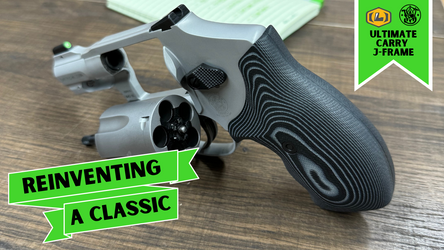S&W Ultimate Carry J-Frame
Posted by Monte Long & Bo Wallace on May 2nd 2024
Reinventing a Classic Revolver
If you’ve been anywhere near the firearms community this year, you’ve surely heard of the new Lipsey’s exclusive Smith & Wesson Ultimate Carry (UC) J-frame models. Lipsey’s, long known as a leading distributor for firearms and ammunition, has also built a reputation for offering some really cool exclusives. With the UC J-Frames, they teamed up with S&W, along with Bryan Eastridge and Darryl Bolke at American Fighting Revolver (AFR), to offer a significant upgrade to the J-frame line.
For those that are not die-hard revolver fans, or are new to the revolver lifestyle, the S&W J-frame line started production in 1950 with the Chief’s Special, also known as the Model 36. The model 36 was designed around the .38 special cartridge and was intended to be a small, lightweight, easily concealed revolver.
The new Chief’s Specials were well received by law enforcement and private citizens alike and are still available today. Despite the favorable reception, improvements could be made on the initial design, and the J-frame line continued to evolve and expand.
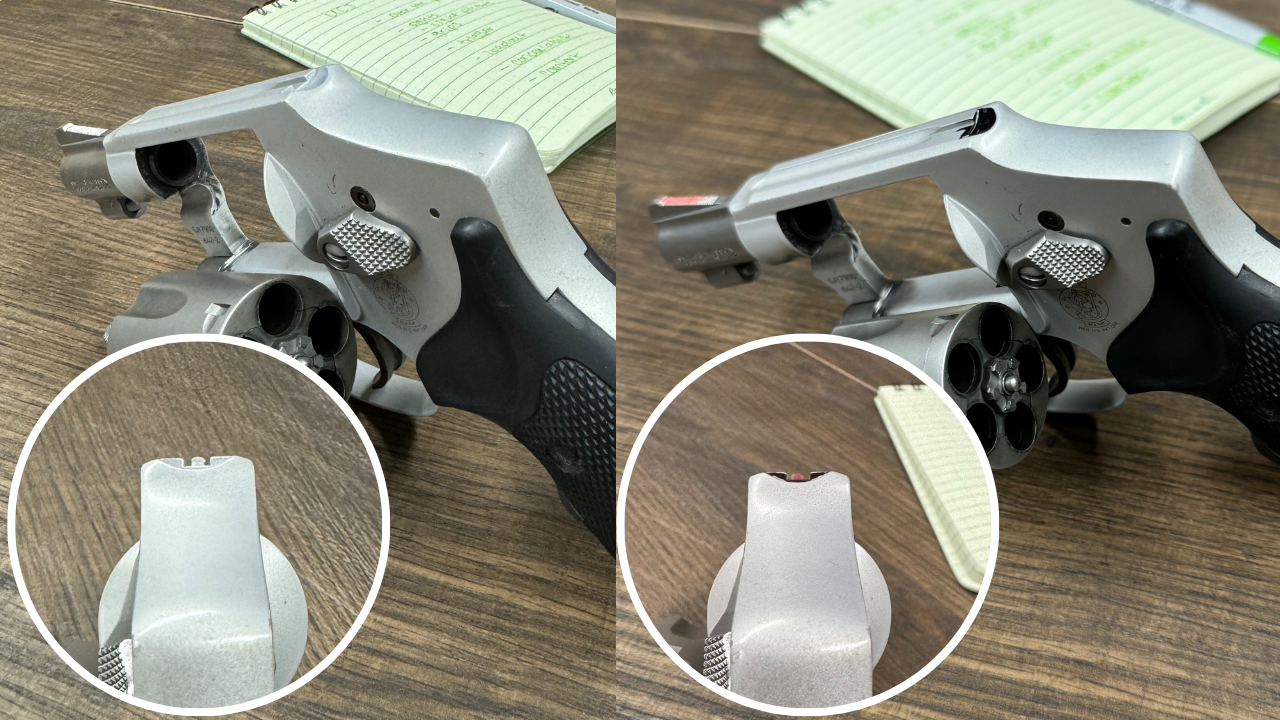
(S&W 642, on right sharpie added to help distinguish sight picture)
The S&W Centennial Line, named for their release in 1952 - S&W’s 100th anniversary year, was an evolution of the line. The original Model 40 Centennials featured a steel frame, 1-7/8” barrel, and an enclosed hammer. At the same time, S&W released the Airweight Centennial, also known as the model 42, which featured an aluminum alloy receiver to reduce weight.
Both variants were successfully produced, with minor engineering changes, for many years. In the early 1990’s, the Airweights underwent various engineering changes and became the 442 (blued finish) and the 642 (stainless finish).
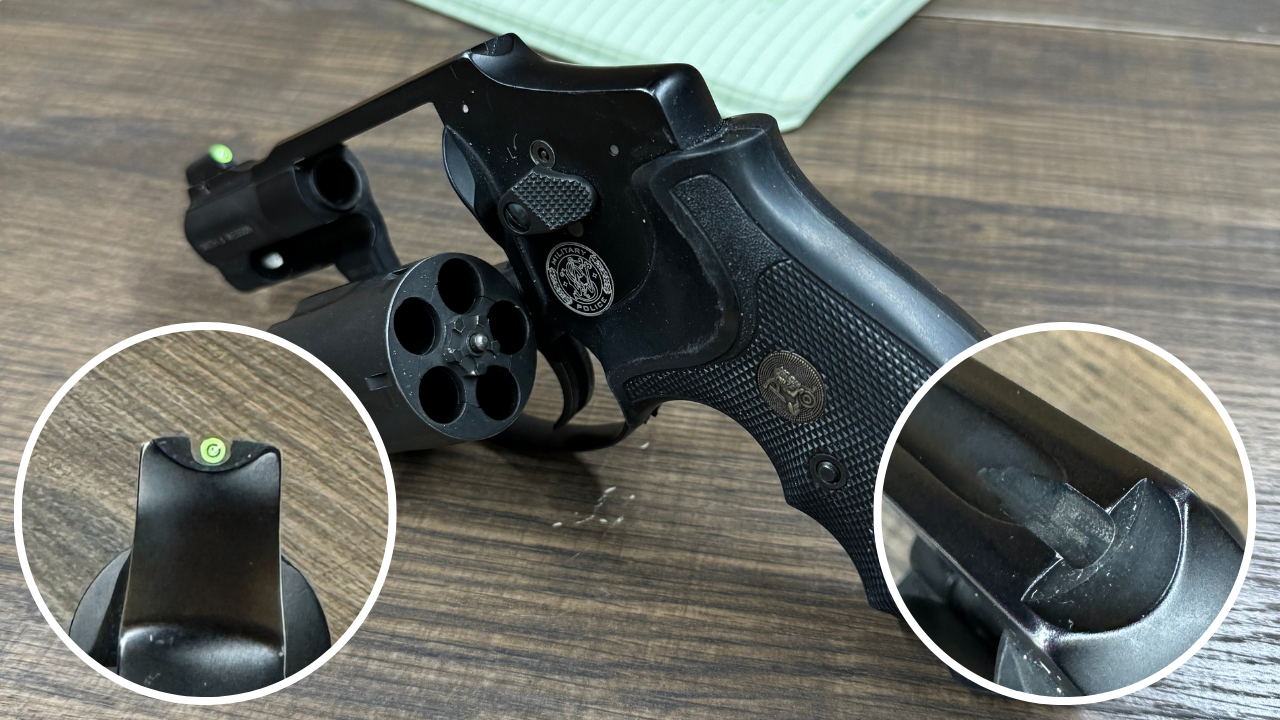
(S&W 442, on right rear milled to add notch to help distinguish sight picture)
While both the 442 and the 642 were noticeable upgrades to the earlier 40 and 42 and featured many modern engineering and manufacturing updates, they were still very much a 1950’s design. The lightweight, 1-7/8” barrels still featured a very narrow, serrated front sight. The receiver maintained the original 1950’s style narrow grooved top strap to serve as a rear sight. The boot grips were small, easily concealable, and felt decent in the hand – right up until full power .38 Special +P ammo was fired.
Despite the many 1950’s features, the 442 and 642 were top sellers for Smith & Wesson. They were affordable, concealable, and had a reputation for reliability. While they were solid choices for a concealed carry revolver, they did have some deficiencies.
The J-frame family has never been known for excellent factory double action triggers, and the heavy and occasionally gritty triggers carried over to the 442 and 642. They had sights, but only in the most rudimentary fashion, and were not easily upgradable, especially not the rear sight. The grips were less than ideal for owners that wanted to train and practice with noticeable frequency. While all of these issues could be overcome, they required the services of a knowledgeable gunsmith, adding cost and, potentially, a protracted wait time while the gunsmith worked through a backlog to get to your gun.
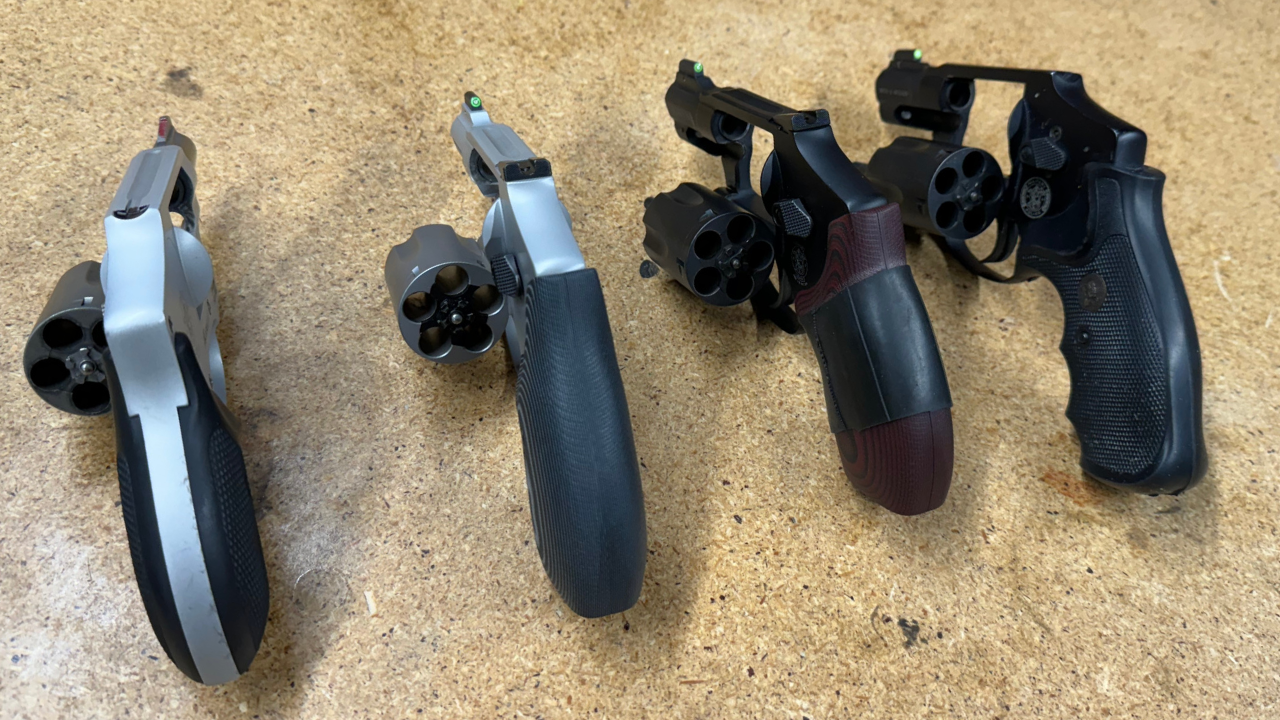
(Side by side comparison from the right: S&W 442, S&W 442-UC, S&W 642-UC, S&W 642)
That brings us to Lipsey’s Ultimate Carry J-Frame. The Lipsey’s exclusives team, led by Jason Cloessner, has extensive knowledge of the consumer market. Smith & Wesson’s current team, led by Andrew Gore, had not only the knowledge to improve the current J-frame, but the willingness to do so. Bryan and Darrel of American Fighting Revolver brought in some extra knowledge of the defensive use of the revolver. Combine all of that, and the consumer wins with a revolver that has been redesigned to be one of the best concealed carry revolvers ever made.

(S&W 642-UC)
So, what makes them such an improvement? We’ll start with the most visually noticeable upgrades – the sights and stocks. As mentioned earlier, the J-frame family in general, and the 442 and 642 in particular, suffered from sights that were difficult to see, even in the best of circumstances. For the UC family, the decision was made to use the S&W shrouded barrel used on some of the more expensive J-frames. That decision allowed for the option of a pinned in front sight, which opened up many front sight options to improve visibility and control point of impact.
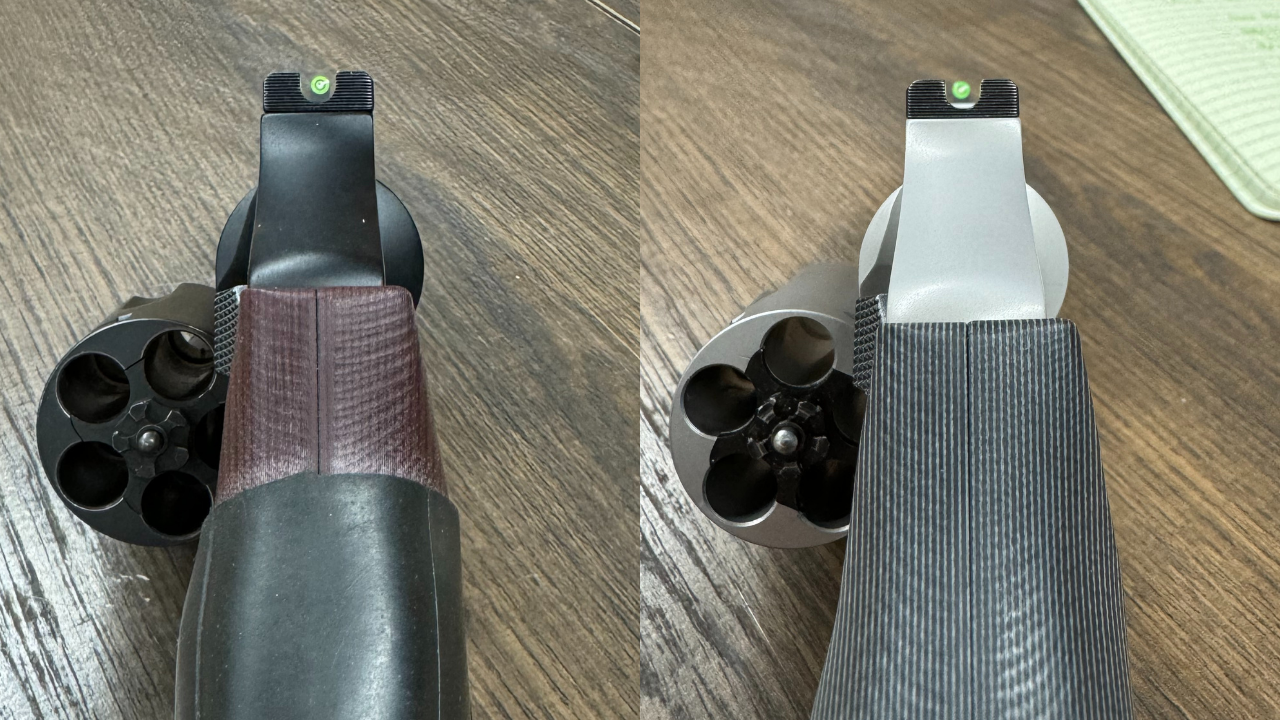
(Improved sight pictures, right S&W 642-UC, left right S&W 442-UC)
As an added bonus, the two-piece design ensures that the front sight is at 12 o’clock top-dead center, which prevents a potential issue with the one-piece barrel used on the earlier guns. While not incredibly common, it was not unheard of for a J-frame front sight to sit slightly off to one side once the barrel was torqued to the correct specification.
The UC J-frame team decided on one of our 2nd generation Standard Dot tritium front sights with a glow ring surrounding the tritium lamp. The front sight is noticeably easier to acquire in any lighting condition. The color was modified from the standard green we use to be a bit lighter. It’s a minor change that, unless you see both side by side, is very difficult to identify.
Not satisfied with just upgrading the front sight, the UC team also addressed the rear sight. They decided to use a drift-adjustable rear sight designed by S&W’s team. The new rear sight offers a vastly improved sight picture compared to the original grooved top strap. Additionally, it has the advantage of allowing for windage adjustments to be made, that are not possible on other J-frame models which have the fixed rear sight notch, while still retaining a very low profile.
The combination of highly visible front sight and drift adjustable U-notch rear sight gives the shooter sights that they can see, and the ability to adjust windage to make sure that they can place bullets where they are aiming when they press the trigger.
The stocks are the next highly visible upgrade. While the old boot grips typically felt good in the hand, they weren’t the most pleasant when shooting. The UC team decided to look back on the history of the Centennial line and asked the folks at VZ Grips to make a set of “High Horn” grips for the new UC models. This style extends the grip higher up the back strap of the revolver and is slightly wider than the boot grips found on other variants of the 442 and 642. These changes protect the shooter from a couple of sharp edges found high on the back strap and spread the recoil forces over more of the hand. These seemingly minor changes make the UC J-frames much more pleasant to shoot than their standard counterparts.
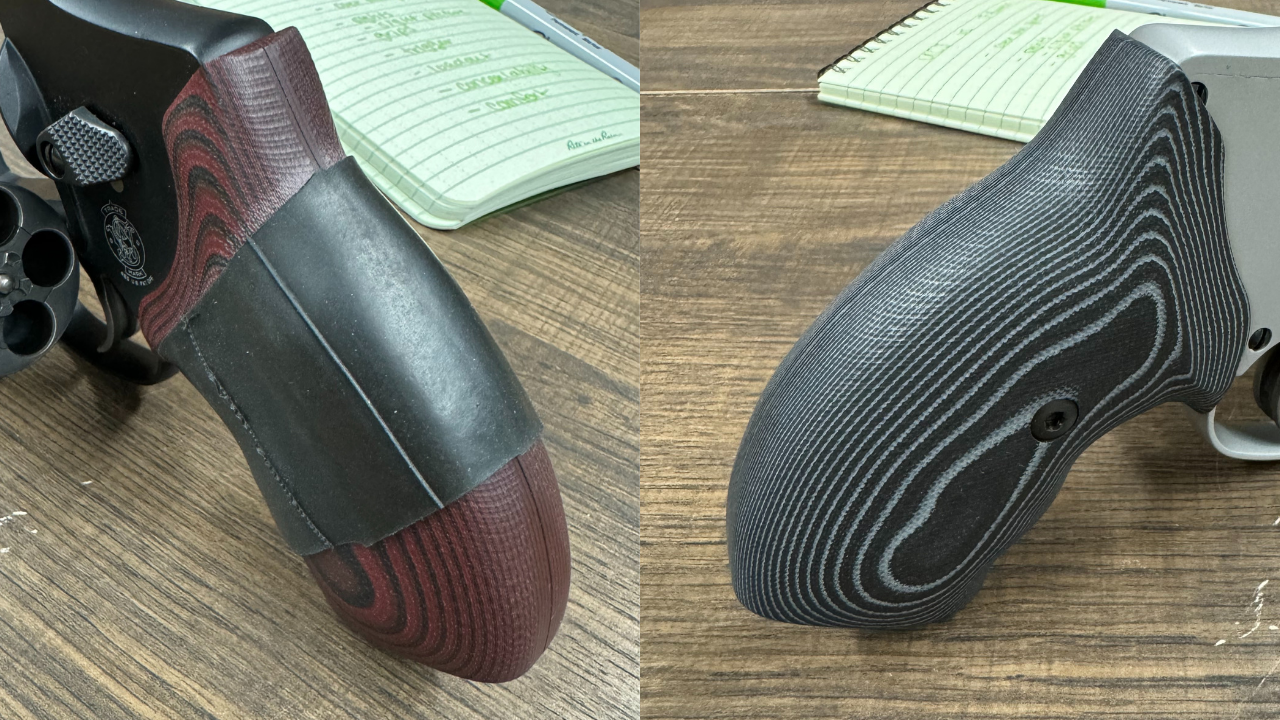
(Improved grip, right S&W 642-UC, left right S&W 442-UC)
Additionally, based on feedback from Lipsey’s and AFR, VZ relieved the grips on the left side to improve their ability to work with commonly used speed loaders like the HKS and Safariland. While the use of speed strips tends to be an easier and lower profile method of carrying spare ammo, speedloaders have their place, provided the grips on the gun will allow their use. It is just this sort of attention to detail that makes the Lipesy’s UC-J such a standout offering.
While the sights and stocks are quite the upgrade to the 442 and 642, the UC team wasn’t content to stop there. Their intention was to make the Ultimate Carry J-frame, not just an improved J-frame.
The cylinder features some significant upgrades. The front edge has been chamfered with the “black powder” style edge. That minor breaking of the edge does a few things for the shooter. It makes holstering the gun slightly easier, as it removes the sharp edge where the outside diameter and the front face of the cylinder meet. This edge break also removes a sharp corner that could be uncomfortable when carrying in a pocket.
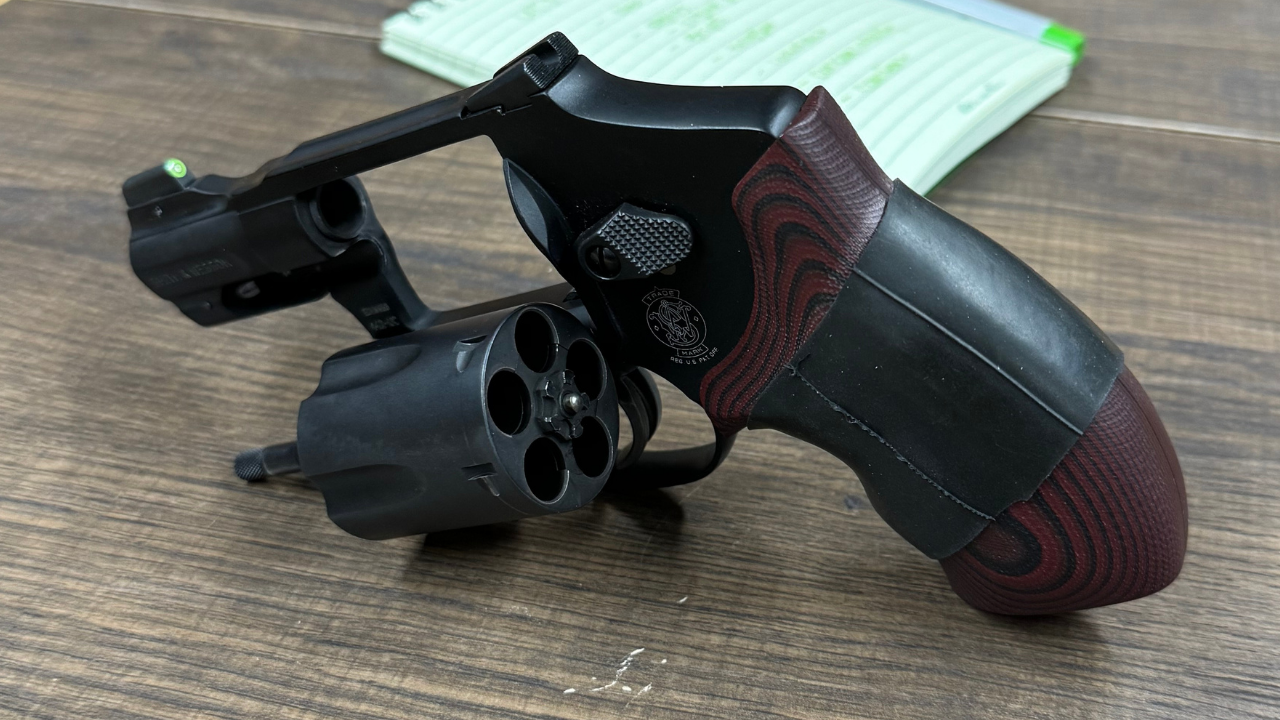
(S&W 442-UC)
Speaking of chamfering, the charge holes in the new UC models feature a very mild but still noticeable chamfer. That chamfer makes reloading the UC models significantly easier to load than guns that have not been modified. Chamfering the charge holes is a common modification to double action revolvers by savvy pistoleros, whether they are carrying defensively or shooting any of the action sports. Again, this is a modification that a competent gunsmith can do on older guns but is a factory feature on the UC models.
But the team still wasn’t satisfied. Andrew Gore from S&W used this collaboration to further advance the J-frame. Smith & Wesson’s engineers have, over the years, had several ideas to improve the J-frame family. Consumer demand and production capacity, especially during the COVID-19 pandemic, prevented the S&W team from pursuing the changes on production guns. When the collaboration began, Andrew urged his team at S&W to use the opportunity to explore the upgrades and create a new evolution of the J-frame.
One of the primary changes noted was the pins that mount the hammer and trigger inside the receiver. While it was extremely rare, on occasion, the mounting pins on the older Airweights could fail. While the potential failure was extremely uncommon, the new UC presented the perfect opportunity to introduce titanium pins that would be lighter and stronger than the steel pins used previously.
Smith & Wesson also made changes to the hammer and sear geometry. While the 442 and 642 were very reliable, as mentioned previously, the triggers were never known for being great. The geometry changes resulted in a smoother action from the factory, negating the need for a knowledgeable gunsmith to work on slicking up the action to provide a smoother trigger pull.
Additionally, S&W’s engineers also used the new model to optimize the main spring and rebound spring to reduce the trigger pull weight. The new optimizations provide a lighter trigger press that reliably ignites primers and allows for a fast, positive reset for subsequent shots.
The Ultimate Carry J-frames have a long, distinguished history. The advancements in engineering and upgrades on the new models are a vast improvement to the line and are an excellent generational improvement to the line. Give your nearest Lipsey’sdealer a call and pick one up today!
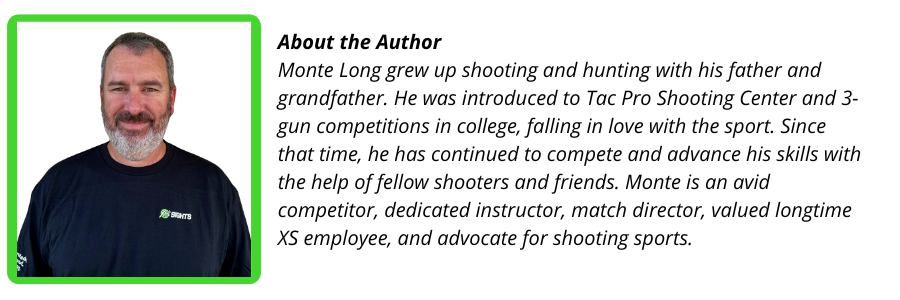
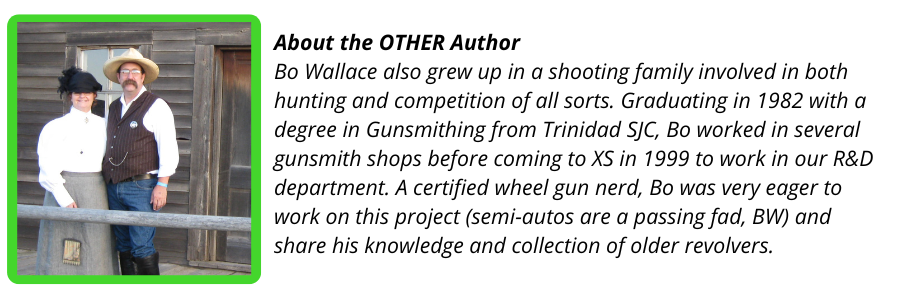
About XS Sights
XS Sights is a 2nd generation, family owned, and majority women owned business that manufactures the fastest sights in any light. From concept and design to creation, XS utilizes tritium, photoluminescent materials, and 25+ years of sight manufacturing expertise to create highly visible and durable sights for personal defense, military, and hunting applications. Proudly made in the U.S.A.

